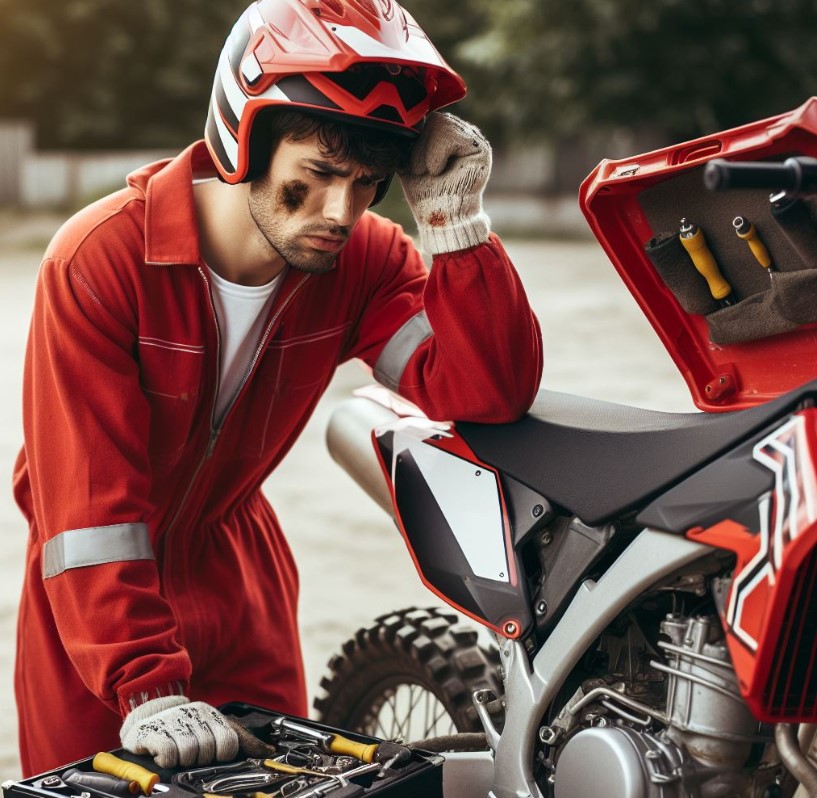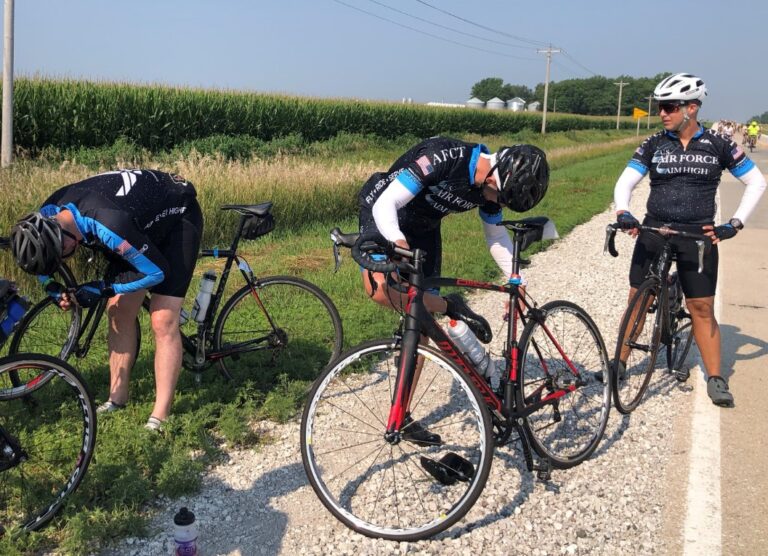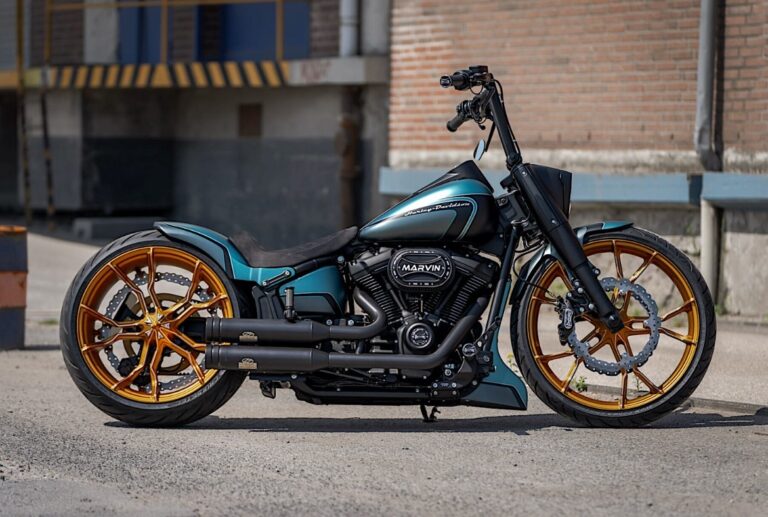Why Does My Dirt Bike Backfire? Explained
Are you looking for Why Does My Dirt Bike Backfire? Experiencing a dirt bike backfire can be alarming and perplexing for many riders. This phenomenon not only disrupts the riding experience but also raises concerns about the health and efficiency of the bike. Understanding the reasons behind this can help in troubleshooting and preventing future occurrences.
Key Takeaways
- Dirt bike backfires are commonly caused by issues in the fuel-air mixture, timing, or exhaust system.
- Regular maintenance and proper adjustments can significantly reduce the likelihood of backfiring.
- Identifying the type of backfire (through the exhaust or intake) can guide the troubleshooting process.
Why Does My Dirt Bike Backfire? Causes of Dirt Bike Backfire

Fuel-Air Mixture Imbalance
One of the primary reasons for a dirt bike to backfire is an improper fuel-air mixture. Whether the mix is too rich or too lean, both conditions can lead to inefficient combustion.
A lean mixture often causes backfires through the exhaust, as unburned fuel ignites in the hot exhaust system. Conversely, a rich mixture can cause backfiring through the intake manifold during engine startup or shutdown.
Timing Issues
Incorrect ignition timing is another culprit. When the spark plug fires too early or too late, it can cause the fuel to ignite at the wrong time, leading to a backfire. Properly adjusting the ignition timing according to the manufacturer’s specifications is crucial for preventing this issue.
Exhaust System Leaks
Leaks within the exhaust system can also lead to backfiring. Even small gaps can allow air to enter the exhaust, mixing with unburned fuel and igniting. Regular inspections of the exhaust system for cracks or loose connections are vital for maintaining the integrity of the exhaust flow.
Preventing Dirt Bike Backfires
Regular Maintenance
Staying on top of maintenance schedules is key. Regularly checking and adjusting the fuel-air mixture, ensuring the ignition timing is correct, and inspecting the exhaust system for leaks can all prevent backfires.
Proper Adjustments
Making the right adjustments based on the riding conditions and any modifications made to the bike can also help. For instance, adjusting the carburetor settings when changing altitudes or after installing a new exhaust system is essential for maintaining the correct fuel-air mixture.
How Do I Stop My Dirt Bike From Backfiring?
Stopping your dirt bike from backfiring involves a few key steps focused on tuning and maintaining the engine’s fuel-air mixture, ignition timing, and exhaust integrity. First and foremost, ensure your bike’s carburetor or fuel injection system is properly adjusted to achieve the optimal fuel-air mixture.

A lean mixture is a common cause of backfiring; therefore, adjusting the carburetor to slightly enrich the mixture can help. For fuel-injected bikes, using a fuel management system to adjust the mapping may be necessary.
Secondly, check the ignition timing. Incorrect timing can lead to premature or delayed ignition of the fuel-air mixture, causing backfiring. Refer to your bike’s service manual for the correct timing specifications and adjust accordingly.
Lastly, inspect the exhaust system for leaks. Even small leaks can allow air to enter and mix with unburned fuel, igniting and causing a backfire. Ensure all connections are tight and there are no cracks in the exhaust pipes.
Regular maintenance, including checking spark plugs and ensuring the air filter is clean and unobstructed, also plays a crucial role in preventing backfires.
Is Backfire Bad For Your Bike?
Backfiring is not inherently damaging in the short term, but if left unaddressed, it can indicate underlying issues that may harm your bike over time.
Occasional backfires can happen, especially under certain conditions like deceleration. However, consistent backfiring should be taken as a sign that your bike’s engine is not running as efficiently or cleanly as it should be.

Backfiring caused by a lean fuel-air mixture can lead to higher engine temperatures, potentially damaging internal components. Similarly, backfiring due to timing issues can stress the engine. Moreover, if backfiring is a result of an exhaust leak, it can decrease the engine’s performance and increase the risk of further damage to the exhaust system.
Addressing the root causes of backfiring not only prevents potential damage but also ensures that your bike is running optimally, providing a smoother ride and prolonging the lifespan of its engine and exhaust system.
Does Backfiring Mean Lean Or Rich?
Backfiring can be caused by both lean and rich fuel-air mixtures, and understanding the difference can help in diagnosing and fixing the issue.
A lean mixture means there is too much air about fuel. This condition is more likely to cause backfiring through the exhaust, especially during deceleration when less fuel is entering the engine, and the throttle is closed.
The unburned fuel ignites in the hot exhaust pipe, causing a backfire. Symptoms of a lean mixture include popping on deceleration, overheating, and a lack of power.
Conversely, a rich mixture—too much fuel compared to air—can lead to backfiring through the intake or carburetor, especially upon startup or when the engine is turned off.
This happens because the excess fuel finds its way into the hot exhaust system or remains in the combustion chamber, igniting and causing a backfire. Signs of a rich mixture include a rough idle, black exhaust smoke, and a decrease in fuel efficiency.
Correctly identifying whether a backfire is due to a lean or rich mixture is crucial for making the appropriate adjustments to the carburetor or fuel injection system to resolve the issue.
Conclusion
Understanding why your dirt bike backfires is crucial for any rider looking to maintain their bike’s performance and safety. By focusing on the fuel-air mixture, timing issues, and the integrity of the exhaust system, riders can minimize the risk of backfiring.
Regular maintenance and proper adjustments according to the riding conditions and bike modifications are essential steps in preventing this issue. Remember, a well-maintained dirt bike not only runs better but also ensures a safer and more enjoyable riding experience.
People Also Ask
Can backfiring be caused by a clogged air filter?
A clogged air filter can indirectly cause backfiring by restricting the amount of air entering the engine, potentially leading to a rich fuel mixture. While a rich mixture typically causes backfiring through the carburetor or intake, it can also result in unburned fuel igniting in the exhaust system. Regularly cleaning or replacing the air filter ensures proper air flow and mixture balance.
Does altitude affect dirt bike backfiring?
Altitude can significantly impact the likelihood of your dirt bike backfiring due to changes in air density. At higher altitudes, the air is thinner (less oxygen available), which can lead to a lean mixture if the carburetor settings are not adjusted accordingly. Enriching the fuel mixture by adjusting the carburetor can help counteract the effects of high altitude and reduce backfiring.
Can faulty spark plugs cause my dirt bike to backfire?
Yes, faulty or improperly gapped spark plugs can cause backfiring. If the spark plugs are worn out, fouled, or not gapped correctly, they may not ignite the fuel-air mixture efficiently, leading to incomplete combustion. This unburned fuel can then explode in the exhaust system, causing a backfire. Regular inspection and replacement of spark plugs can prevent this issue.
How can I tell if backfiring is caused by a lean or rich mixture?
A lean mixture backfire typically occurs during deceleration or at steady high speeds, characterized by a sharp, popping sound. It’s often accompanied by symptoms of overheating and a noticeable lack of power. A rich mixture backfire, on the other hand, usually happens during startup or idle and is a deeper, more muffled sound. The engine may also emit black smoke, indicating unburned fuel.

Welcome to the exhilarating world of Matt Rex, a professional car racer turned renowned vehicle enthusiast. Immerse yourself in his captivating blog as he shares heart-pounding adventures, expert reviews, and valuable insights on cars, trucks, jets, and more. Fuel your passion for speed and discover the beauty of vehicles through Matt’s engaging stories and meticulous expertise. Join the ever-growing community of enthusiasts who find inspiration and expert advice in Matt Rex’s blog—a digital hub where the thrill of speed meets the pursuit of knowledge.







